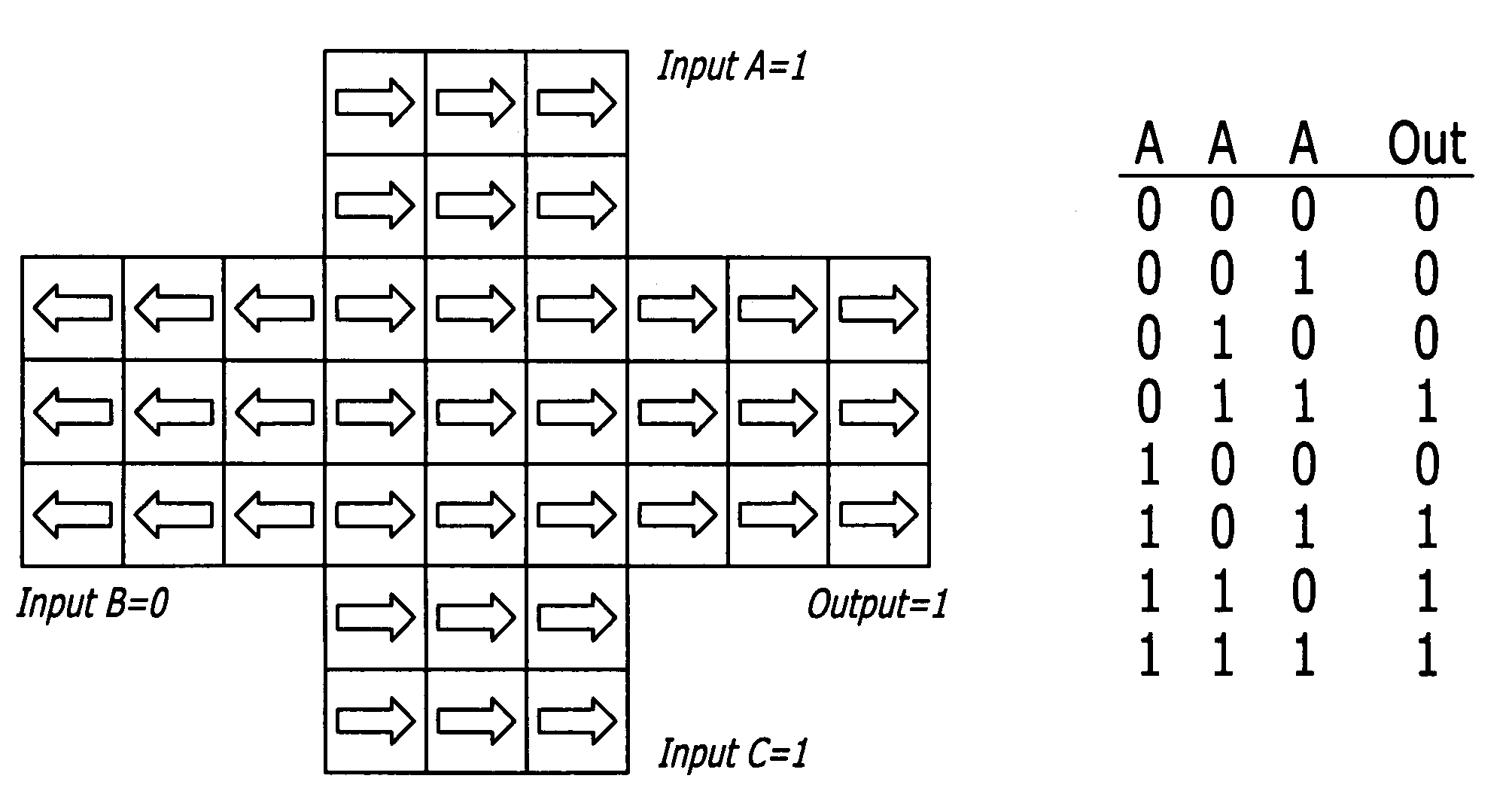Spin-orbital quantum cellular automata logic devices and systems
a quantum cell and logic device technology, applied in the field of nanocomputing, can solve the problems of inability to reduce critical dimensions further, lack of logic architecture which would ensure input isolation, and higher decoherence ra
- Summary
- Abstract
- Description
- Claims
- Application Information
AI Technical Summary
Benefits of technology
Problems solved by technology
Method used
Image
Examples
Embodiment Construction
[0017]Embodiments of the present invention may be differentiated from prior art in that it enables continuous scaling of the size of the unit cells intrinsic to QCA down to the atomic sizes and the physical attributes that stores the information (coupled ferromagnetic and transport phase states).
[0018]The embodiments use a novel implementation of the quantum cellular automata (QCA) architecture QCA systems that use unit cells physically configured so they spontaneously interact with each other in a sequential fashion to perform logic operations. In particular, certain crystalline materials, such as transition metal oxides, exhibit strongly correlated electronic, structural and magnetic effects. The manganese atoms in certain manganite crystals have an energy band structure as shown in FIG. 1, where the energy levels are associated with different orbital states of the 3d shell electrons. In the Figure, the electron wavefunction amplitudes are illustrated by the smooth shaded objects ...
PUM
 Login to View More
Login to View More Abstract
Description
Claims
Application Information
 Login to View More
Login to View More - R&D
- Intellectual Property
- Life Sciences
- Materials
- Tech Scout
- Unparalleled Data Quality
- Higher Quality Content
- 60% Fewer Hallucinations
Browse by: Latest US Patents, China's latest patents, Technical Efficacy Thesaurus, Application Domain, Technology Topic, Popular Technical Reports.
© 2025 PatSnap. All rights reserved.Legal|Privacy policy|Modern Slavery Act Transparency Statement|Sitemap|About US| Contact US: help@patsnap.com



